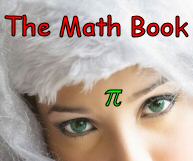Tuesday, December 19, 2006
Novelty theory

Novelty theory attempts to predict the ebb and flow of novelty in the universe as an inherent quality of time. It is an idea conceived of and discussed at length by Terence McKenna from the early 1970s until his death in the year 2000. Novelty theory involves ontology, morphogenesis, and eschatology. Novelty, in this context, can be thought of as newness, density of complexification, and dynamic change as opposed to static habituation. According to McKenna, when "novelty" is graphed over time, a fractal waveform known as timewave zero or simply the timewave results. The graph shows at what times, but never at what locations, novelty is increasing or decreasing. The theory lacks any credible basis in peer-reviewed science and is generally dismissed as pseudoscience at best.
The timewave itself is a combination of numerology and mathematics. It is formed out of McKenna's interpretation and analysis of numerical patterns in the King Wen sequence of the I Ching (the ancient Chinese Book of Changes). This concept first took root in his entheogenic experiences shared by him and his brother Dennis McKenna as documented in the book True Hallucinations. The theory is clearly based in numerology and takes shape out of McKenna's belief that the sequence is artificially arranged as such purposely. Mathematically, the sequence is graphed according to a set of mathematical ratios, and displays a fractal nature as well as resonances, although it was not captured in a true formula until criticism from mathematician Matthew Watkins (see below). McKenna interpreted the fractal nature and resonances of the wave, as well as his theory of the I Ching's artificial arrangement, to show that the events of any given time are recursively related to the events of other times.
The theory was never published in a peer-reviewed journal and McKenna's sources and reasoning were primarily what would be considered numerological rather than mathematical by professional mathematicians and scientists, the theory has failed to gain any (scientific) credulity or much recognition. However, McKenna was highly critical of such fields for adhering to what he saw as a flawed Western dominated paradigm, and did not seek to create a theory acceptable to the mathematical community. The theory was, however, revised by nuclear physicist John Sheliak after a flaw was discovered by Matthew Watkins. The new revision is often referred to as Timewave One, but is also inclusive in the set of alternate waves in the Timewave Zero software. This new version is also acclaimed to match history more accurately. Timewave Zero received a great deal of its public attention through the publications of R. U. Sirius, particularly the cyberculture magazine Mondo 2000.
This article is licensed under the GNU Free Documentation License. It uses material from the Wikipedia article "Novelty Theory". This entry is a fragment of a larger work. Link may die if entry is finally removed or merged.
<< Home
 The Wikipedia Knowledge Dump (WikiDumper.org)
The Wikipedia Knowledge Dump (WikiDumper.org)


